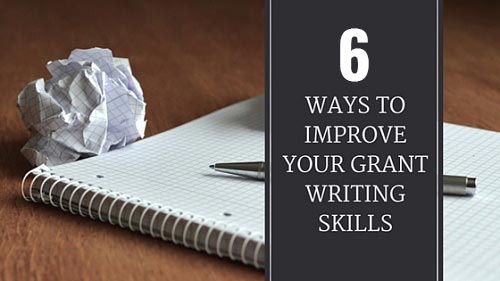Grant writing is essential for nonprofit organizations, but it’s no easy task. Creating unique grant applications can be daunting and time consuming, and it’s discouraging to have one denied. To prevent your proposals from being rejected, it’s important to understand why it happens.
Why Do Grant Proposals Get Rejected?
There are a lot of reasons your application could have been denied, but here are three of the top reasons grant applications get rejected:
The foundation doesn’t have enough money to approve all grant proposals
Your proposal falls outside the foundation’s area of interest (your goals don’t match their goals)
The proposal doesn’t follow the application guidelines
You can avoid having your application tossed out for these reasons by making sure your proposal stands out, aligns with the foundation’s interests, and by ensuring you followed the guidelines. It’s hard work, but it’ll be worth it when your project gets the funding it needs!
To help you navigate the grant-writing waters, we’ve got 5 ways to streamline the process and improve your chances of securing funding.
How to Improve Your Grant Writing Skills
1. Review Application Guidelines
Carefully read over the guidelines of each grant and make sure that you have (or are able to get) all of the information and materials you’ll need to complete your application. Getting your application thrown out because you didn’t follow directions is probably the worst way to lose out on funding!
To help keep you organized, we recommend creating a folder for each grant you plan on applying for so your materials and information will be in one place. A copy of each grant’s guidelines should go in the corresponding folder and you’ll want to refer to it often to make sure you’re covering all your bases.
2. Create an Outline
You can also stay organized by making an outline of the elements your proposal will have. Although most proposals contain the same information, you should always check the grant guidelines to see exactly which components you should include. The common components of a grant proposal are:
- Letter of Inquiry or Cover Letter
- Executive Summary
- Statement of Need
- Goals and Objectives
- Program Design or Methodology Evaluation
- Project Sustainability
- Nonprofit Organization Information
- Budget
In your outline, make sure you include specific notes and details about what should be included in each section. This will help keep you and your team on track and ensure that nothing is left out of your final application. When it’s time to write, you’ll be able to fill in your outline and elaborate on your details easily.
3. Make a Plan
When you’re ready to create the application, it’s best to plan out how work on the application will progress. If you’re working with a group, use your outline to delegate the sections. Set due dates for every component and make sure expectations are clear.
If you’re writing the application by yourself, it’s still important to set due dates for yourself so you’re not scrambling to finish it at the last minute. Throwing together a grant application rarely results in funding, but always results in high stress levels!
4. Keep it Simple
By their nature, grant proposals are complex documents – budgets, data, and strategy aren’t exactly easy reading! Using simple language in your proposal means the person reading it won’t have to spend hours trying to understand your application. If they can understand it easily, they’re more likely to want to fund it.
We recommend writing as if you were explaining your organization and goals to your parents, grandparents, or child. They don’t know as much about your organization as you do, and they may not know much at all! Keeping it simple allows someone unfamiliar with your project to understand it completely.
Other ways to make sure your proposal is straightforward and easy to read:
- Don’t be too formal. Write conversationally while staying professional.
- Avoid empty phrases or vague words like nearly, almost, about, or roughly. Be specific!
- Don’t use industry-specific jargon, technical language, acronyms, or clichés.
- Use short paragraphs, headings, and subheadings to help readers follow along and stay engaged. Walls of text are never good!
- Use charts and graphs to help explain your points. These help support your argument and make your document easier to read by breaking up text.
5. Be Creative
Many grant proposals come across as boring, but they don’t have to! Be creative, tell your organization’s story, and highlight what makes your nonprofit and the project unique. Use creative language to tell them exactly how your community would benefit from this funding. Being creative and memorable will go a long way when there are a lot of applicants and the foundation’s funds are limited.
6. Proofread Before Sending!
Always proofreading your proposal at least once! Check it for grammar, spelling, punctuation errors, and clarity. Even the smallest errors look bad when you’re trying to convince someone to fund a project. In addition, take a few minutes to make sure you’ve fulfilled all of the application guidelines.
When you’ve looked over it yourself, have one of your colleagues read it. They’ll be able to catch mistakes you may have missed and point out any sections that are unclear. It’s a good idea to share the guidelines with them so they can point out anything you may have overlooked.
Improve Your Organization’s Grant Funding
Abila software can help you simplify and organize your grant management process even further. Capital Business Solutions is a reseller for Abila Grant Management, allowing you to manage your budget, increase grant funding, and measure success. Request more information on Abila Grant Management by calling us at 919-821-1244 or filling out the form below.
